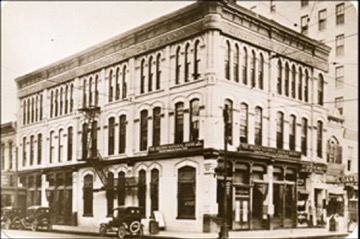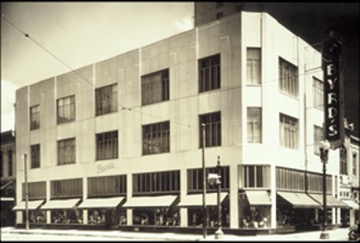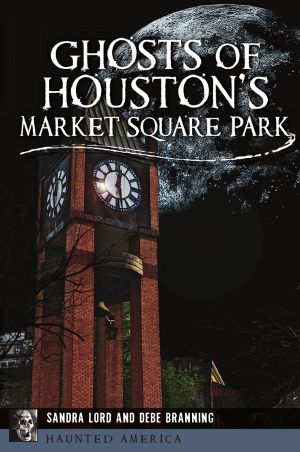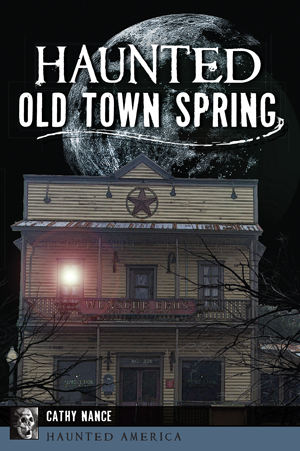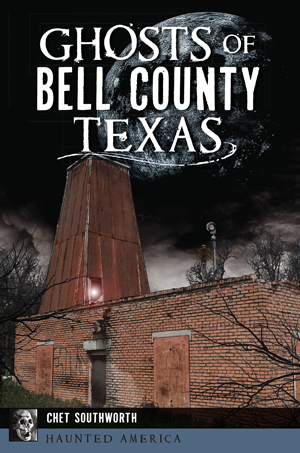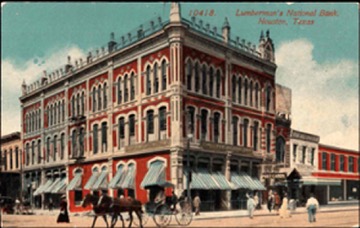
Sandra Lord has been giving guided tours of Houston for so long she is almost a historic landmark herself. Her expertise on Houston’s famed Downtown tunnels have earned her the title “Tunnel Lady.” Her first book “Ghosts of Houston’s Market Square Park” was published last month.
How did you get started giving tours?
I already had experience designing public tours for the University of Pittsburgh Library in 1967 and The Franklin Mint in 1970. I have always loved walking in all its forms. When I lived in Europe in the early 1960s and, again, when I lived in Montana and San Francisco in the 1980s, I had no car and walked or took a bike or public transportation everywhere. I learned a lot about each city, had fun, and was in great physical shape. The minute I purchased a car, I stopped walking. So here in Houston, I decided to research the city’s history, architecture, and trivia, create guided and self-guided walking tours, and then have folks join me on walks. While some people purchased self-guided tours and walked on their own, most preferred to have me lead them. To them, it was entertainment, education, and networking, all in one. So I became a tour guide.
I started out with a series of walking tours offered through Leisure Learning Unlimited. I picked areas that were of interest to me, researched them, designed a comfortable route, picked a fun restaurant to start and end the event, then took people on a walk. A senior citizens organization located downtown asked me to create a weekly walking tour for its members so that they would be more comfortable taking the bus or driving into downtown. Because Houston’s weather is so unpredictable, we ended up using the Downtown Houston Tunnel System as much as the street. I soon realized that the Tunnel was Houston’s most unusual — and unknown — attraction, began to research it and other tunnel systems around the world, and, before I knew it, I was the “Tunnel Lady.”
I began offering daily guided walking tours for the public through my first company, Discover Houston Tours, which 30 years later is still in operation thanks to its current owner, Phil Stewart. I joined the Urban Adventures international family of local tours in 2011 and designed two Houston Urban Adventures: a tunnel tour and a pub crawl, both still available thanks to my former tour guide and current owner, Michael Schmidt, who became the new owner in 2015.
How has the historic preservation community changed since you began?
Positive: There is now a relatively strong preservation ordinance in effect through the city’s planning department and our volunteer citizens on the Houston Archaeological and Historical Commission. Harris County’s Historical Commission, as well as its Archives, and Historical Documents departments, and the four Commissioners’ Senior Bus Tour programs have raised awareness of the importance of preservation, saved valuable documents, and helped our economy by growing the tourism industry.
Before I began offering walking tours in the late 1980s, I attended guided walking tours by the Houston Chapter of the American Institute of Architects and the Greater Houston Preservation Alliance (Preservation Houston). There was only one of each offered on a Sunday afternoon each month. The tours were often sold out and had waiting lists. Today, those two organizations have greatly enhanced their public programs and have been joined by the Houston History Association and Houston History Magazine; the Professional Tour Guide Association of Houston whose members conduct bus, walking, and bike tours all over the greater Houston area; Buffalo Bayou Partnership, which offers walking, biking, and boat tours; Facebook, and Instagram in association with The Heritage Society; and enough other activities to fill a monthly calendar. In fact, the Houstorian recently published the Houstorian Calendar and the Houstorian Dictionary.
Related: Celebrating Black History from Galveston to Houston
There were very few books on Houston history available when I arrived in Houston in 1984; David McComb’s Rice University dissertation turned book published in 1981, Houston — A History, was about it for popular consumption. Eight years later, thanks to the Republican Party holding its national convention in Houston in 1992, publishers saw a niche opportunity and rewarded us with Houston: The Unknown City and Houston’s Forgotten Heritage, which sent a loud message about the city’s interest in history at that point.
Today, Arcadia Publishing, alone, has 44 books about Houston listed on its web site; Google has seven pages listing “Houston History Books”; and Amazon lists 22 books on Houston history. In time for Juneteenth 2020, the Houston Chronicle published J. R. Gonzales’s “From Jim Crow to hotbed of diversity, 20 books that explore Houston’s history of race and racism.” If you want to drill down further, check out Houstonia’s “5 Houston-related History Books to Bolster Your Bayou City Pride.”
I would not have had a clue about many aspects of Houston’s history without the Houston Business Journal’s weekly articles about “Houston Heritage.” Now, the internet and social media play a huge part in the “younger” generations’ embrace of the past and the importance of preservation. They make up a large portion of the Houstonians who take advantage of all these new opportunities to explore and preserve Houston’s history.
Negative: The ordinance could be a lot stronger but Houston is still a developers’ city and the emphasis is on the future, not the past. Public awareness of the importance of preservation could be more widespread.
Are there any specific preservation projects that excite you?
Yes, what is happening now around Market Square Park is very positive, as are Lovett Development’s reimagining of the downtown post office, and several aspects of what will emerge when the Gulf Freeway is repositioned. I have, however, several concerns about the future.
The Past. When I moved to Houston in 1984, one of preservationists’ hopes was for developers to create sympathetic infill in areas where historic buildings were able to survive. While the infill around Market Square Park is not “sympathetic” historically, the new architecture seems to blend well with the remaining buildings. And the luxury apartments have turned Market Square Park into a kind of Notting Hill neighborhood. Some, like Hugh Grant’s and Julia Roberts’ characters, who can afford to live in those apartments want to keep the area attractive. Others, like the throngs pictured shopping and walking in Notting Hill in the movie, who can’t afford to live there love to come to Market Square to see and be seen in the neighborhood. Unlike the 70s, the businesses and activities planned in the Market Square Park area are sustainable. The park, celebrating its tenth anniversary, is truly a treasure.
The Present. The historic buildings that have survived have a good chance of remaining on the four blocks surrounding Market Square Park. That’s why I decided to promote them in our book. As the area has become more viable economically, rents have gone up and tenants like Treebeards have chosen to leave. The choice of new tenants for the Baker-Meyer Building will be a signal about what we can expect around the park in the future. Ownership of the remaining historic buildings by sympathetic Houstonians is essential. I am concerned about what will happen if and when there is turnover in ownership within the next ten years.
What building would you like to bring back from the past?
Easy. The 1884 Prince Building at 420 Main Street, which became the Lumberman’s National Bank, and, in 1923, the Second National Bank. It was remodeled again in 1934 as Byrd’s Department Store, and again in 2006 as Byrd’s Lofts. Its bones are still present: the mezzanine, the corner entrance, the basement. Plus, there are great stories connected with the building (and the block) throughout its entire history.
Who, from Houston’s past, would you like to meet?
Robert “Honest Bob” Wilson (1793-1856) (or any of his living relatives), Robert Boyce (1814-1885), and Pamelia Mann (????-1840). If you don’t know who they are, the two Roberts are featured in our book and more will be coming at www.HoustonWalks.us about Pamelia in 2021.
Have you communicated with any Market Square Ghosts?
In a way. In the early 2000s, I designed what I hoped would be a blockbuster itinerary that would be repeated every year. Like many of my “great ideas,” it fizzled after just one tour: Ghost Walks Live. Thanks to some wonderful and creative paid volunteers, the tour started at the Doubletree (now CB) Hotel and stopped first at the site of the Episcopal and Masonic cemeteries in today’s Sam Houston Park. The participants that night all dressed in Halloween costumes.
As I was telling the story about a couple who were separated when only one of them (the husband) was relocated to Glenwood Cemetery and could only “see” each other again on Halloween when spirits rose from their graves, a female participant, dressed in late Victorian style, cried out the husband’s name; her companion, wearing a tall Victorian hat, cried out the wife’s name, and they embraced and told the rest of the group what had happened to them. We then moved on to other locations, including the “Hanging Oak” at 315 Capitol Street.
While I was telling the story of the Harris County Jail that used to be on that site and how prisoners were able to order whatever they wanted for dinner the night before they were hanged (inside the jail, not from the tree), a woman crossed Bagby Street and walked toward the group. She was dressed for the 1920s complete with apron, potholders, and casserole dish. As she reached our astonished group, she told the rest of her story (she was the “sheriff’s wife”) and then walked the rest of the way with us. When we arrived at Market Square Park, I stood on the south side of Congress Avenue, faced the now much smaller group standing in front of the mosaic-tile bench so they could look across at La Carafe.
I told the story of the “Lady in White” who could be seen in the portrait of “Gladys” inside the bar, of how she was from Quality Hill and was not allowed to marry the handsome butcher who worked at the city market. She died of a broken heart and, I said, “sometimes her ghost will appear on the balcony of La Carafe, looking for her lost love, and then exit the building and disappear.” As I started to speak, everyone in the group began pointing at La Carafe’s balcony.
There she was, the ghost of a lady covered from head to foot in white lace (purchased at High Fashion in Midtown). She looked at Market Square Park, turned back inside the building, then emerged through the front door and “floated” down Congress and “disappeared” around Milam. After that, there were people who swore that the portrait of Gladys was really the lady in white. Why didn’t I repeat such a fabulous tour with great “ghosts”? Because it was a cold and drizzly night and people dropped off at local bars to stay warm and dry.
I realized I couldn’t afford to pay “ghosts” on nights when the weather was bad. Several years later, one of the participants who stuck through to the end, called to say she had guests and wanted to take the tour. Sadly, I had to tell her it had been “one night only.”
Houston is such a forward-looking city, how do you frame its history with that in mind?
Planning to move into the future is great but people love stories and, I feel, some of the best stories are of real people doing amazing things — good and bad. You can see a play or go to a symphony or restaurant or nightclub in any city in the world but what makes you want to go and want to go back? The stories. Would Rick’s Bar be special if it weren’t for the story of Casablanca? The same is true of our fair city, Houston.
What role, if any, does nostalgia play in your work and love of Houston history?
I never thought of what I do as nostalgic, but I suppose it is. Mary Gibbs Jones used to say that her husband, the great Jesse H. Jones, loved all his buildings and sometimes patted them. I do the same, literally and figuratively. One night, not long after I moved here, I was waiting for a bus downtown. That was in the days when there was “nobody” downtown. There was a man, a “nobody,” who suddenly ran out into the empty street, turned around with his arms flung wide and yelled, “This is Houston, man! Texas, man!” The rest of us “nobodies” laughed and clapped. That’s why I’m still here, still telling stories.
Do you gravitate more towards the architectural significance of structures or the societal histories they can recall?
Both. Wherever there’s a good story.
Any follow-up book ideas?
I’m working on a self-guided cell phone tour coming soon to www.HoustonWalks.us featuring “If These Blocks Could Talk: Ghost Walk 2020” in the Market Square Park area.
Want to learn more about the hauntings in Houston? Check out Ghosts of Houston’s Market Square Park and other similar titles at arcadiapublishing.com!


